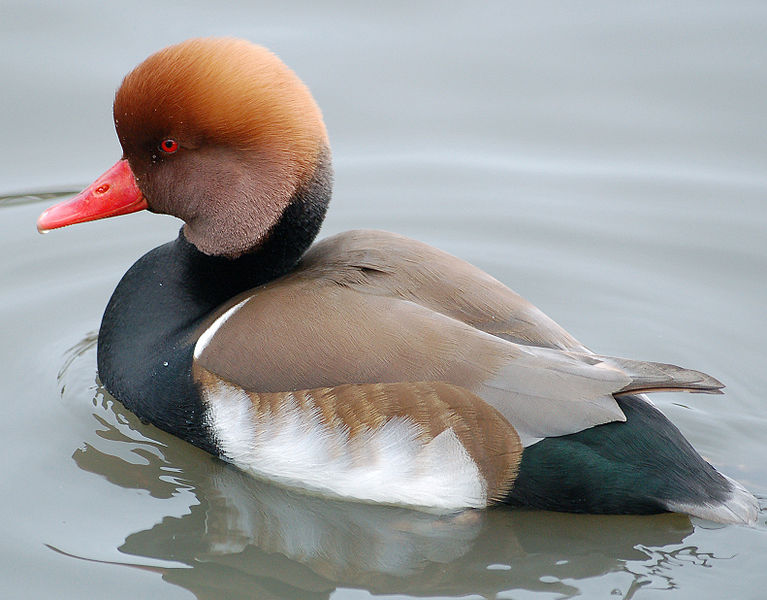
Red-crested pochard(Netta rufina)
Phylum —chordata
Class — aves
Order — anseriformes
Family — anatidae
Genus –netta
Appearance
The adult male is unmistakable. It has a rounded orange head, red bill and black breast. The flanks are white, the back brown, and the tail black. The female is mainly a pale brown, with a darker back and crown and a whitish face. Eclipse males are like females but with red bills.
Length – 53-57 cm, wingspan – 85-90 cm, weight – 900-1400 g.
Habitat
Its breeding habitat is lowland marshes and lakes in southern Europe and it extends from the steppe and semi-desert areas on the Black Sea to Central Asia and Mongolia, wintering in the Indian Subcontinent and Africa. It is somewhat migratory, and northern birds winter further south into north Africa.
Behavior
They are gregarious birds, forming large flocks in winter, often mixed with other diving ducks, such as common pochards.
Diet
Red-crested pochards eat aquatic plants, and typically upend for food more than most diving ducks.
Reproduction
Red-crested pochards are monogamous breeders.
Pairs form in the winter and a bond develops throughout the spring migration. Red-crested pochards breed in isolated pairs or in loose colonies. Many birds begin breeding at one year of age, though others don't begin until year two. Breeding location varies by area.
Females lay their eggs between late March and early July in central and southern Europe. Nests are built from the ground up, mostly in the dense vegetation of reed beds.
From the time the eggs are laid to the time they hatch, the female red-crested pochard is the primary caretaker. She is responsible for incubating the eggs and looking after the chicks until they fledge approximately 50 days after hatching. The male is responsible for courtship-feeding in which the female approaches him, takes the food from his bill, and feeds the ducklings. The young return to their mother's side voluntarily or when called to receive food.
In captivity
In captivity, red-crested pochards can live up to 20 years.
Red-crested pochards are kept in flocks, as they are social birds. Keepers make a sufficiently deep pool or natural reservoir for them. Pochards can easily survive in cold weather. For them, a small hole is cut in the frozen water, and hay is placed on the shore so that the birds can warm themselves on it. In windy weather keepers can construct plastic shields protecting birds from the wind on the side of the nest with hay.
The diet of pochards consists of mixed feed, grain mixture, fish and minced meat. Minced meat can be given separately or mixed with grain. Also feed for laying hens is suitable for pochards.
 Russian
Russian
 English
English


















